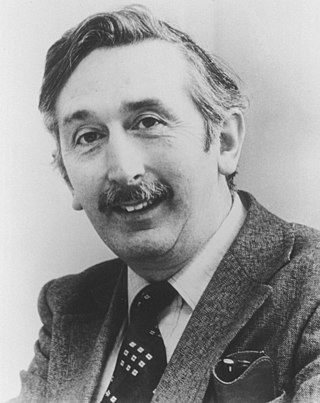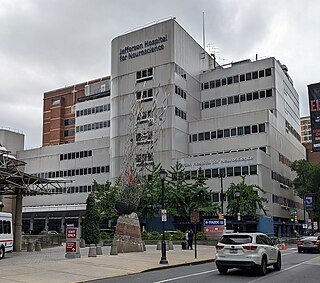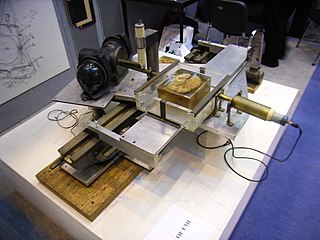History
The hospital was opened in 1869 following a donation of £100,000 by Atkinson Morley, a wealthy hotelier and landowner, to St George's Hospital "for receiving, maintaining, and generally assisting convalescent poor patients". [1] Morley had been a medical student at St George's Hospital circa 1800 when it was located at Hyde Park Corner. [2] 28 acres (11 ha) of land from the Duke of Wellington's old estate in Wimbledon was bought and a building was constructed in the Second Empire style. It opened on 14 July 1869. [3]
The hospital remained a convalescent home until 1939. During the Second World War, when the Bolingbroke and St. George's acted as emergency hospitals for war casualties, the Neurosurgery Unit was established at the AMH by the neurosurgeon Sir Wylie McKissock. He was by far the most prolific lobotomist in the country, performing lobotomies at Atkinson Morley and across the south of England. [4]
As the Regional Neurosciences Unit for South West London, the hospital even had its own helicopter landing facility. Next door was the Wolfson Neurorehabilitation Centre. [5]
A form of lobotomy known as limbic leucotomy was developed in the early 1970s by surgeon Alan Richardson at Atkinson Morley Hospital. The operation combines stereotactic subcaudate tractotomy and cingulotomy, with up to 14 cryogenic lesions made in the brain. [6] Limbic leucotomies continued to be performed at Atkinson Morley Hospital until 1999. [7] [8]
The hospital remained open until 2003 when neurology services were relocated to a purpose-built wing of the main St George's Hospital site, which had by then moved to Tooting. The Wolfson Neurorehabilitation Centre was closed in 2012 after providing a rehabilitation service to patients of the new Atkinson Morley's Wing at St. George's Hospital and throughout South West London. The building and nearby grounds were converted into apartments and renamed Wimbledon Hill Park. [9]

Neurosurgery or neurological surgery, known in common parlance as brain surgery, is the medical specialty concerned with the surgical treatment of disorders which affect any portion of the nervous system including the brain, spinal cord and peripheral nervous system.
Psychosurgery, also called neurosurgery for mental disorder (NMD), is the neurosurgical treatment of mental disorder. Psychosurgery has always been a controversial medical field. The modern history of psychosurgery begins in the 1880s under the Swiss psychiatrist Gottlieb Burckhardt. The first significant foray into psychosurgery in the 20th century was conducted by the Portuguese neurologist Egas Moniz who during the mid-1930s developed the operation known as leucotomy. The practice was enthusiastically taken up in the United States by the neuropsychiatrist Walter Freeman and the neurosurgeon James W. Watts who devised what became the standard prefrontal procedure and named their operative technique lobotomy, although the operation was called leucotomy in the United Kingdom. In spite of the award of the Nobel prize to Moniz in 1949, the use of psychosurgery declined during the 1950s. By the 1970s the standard Freeman-Watts type of operation was very rare, but other forms of psychosurgery, although used on a much smaller scale, survived. Some countries have abandoned psychosurgery altogether; in others, for example the US and the UK, it is only used in a few centres on small numbers of people with depression or obsessive-compulsive disorder (OCD). In some countries it is also used in the treatment of schizophrenia and other disorders.

A lobotomy or leucotomy is a form of neurosurgical treatment for psychiatric disorder or neurological disorder that involves severing connections in the brain's prefrontal cortex. The surgery causes most of the connections to and from the prefrontal cortex, the anterior part of the frontal lobes of the brain, to be severed.
Bilateral cingulotomy is a form of psychosurgery, introduced in 1948 as an alternative to lobotomy. Today, it is mainly used in the treatment of depression and obsessive-compulsive disorder. In the early years of the twenty-first century, it was used in Russia to treat addiction. It is also used in the treatment of chronic pain. The objective of this procedure is the severing of the supracallosal fibres of the cingulum bundle, which pass through the anterior cingulate gyrus.

Sir Godfrey Newbold Hounsfield was a British electrical engineer who shared the 1979 Nobel Prize for Physiology or Medicine with Allan MacLeod Cormack for his part in developing the diagnostic technique of X-ray computed tomography (CT).
Lars Leksell (1907–1986) was a Swedish physician and Professor of Neurosurgery at the Karolinska Institute in Stockholm, Sweden. He was the inventor of radiosurgery.

Stereotactic surgery is a minimally invasive form of surgical intervention that makes use of a three-dimensional coordinate system to locate small targets inside the body and to perform on them some action such as ablation, biopsy, lesion, injection, stimulation, implantation, radiosurgery (SRS), etc.
The study of neurology and neurosurgery dates back to prehistoric times, but the academic disciplines did not begin until the 16th century. From an observational science they developed a systematic way of approaching the nervous system and possible interventions in neurological disease.

St George's Hospital is a large teaching hospital in Tooting, London. Founded in 1733, it is one of the UK's largest teaching hospitals and one of the largest hospitals in Europe. It is run by the St George's University Hospitals NHS Foundation Trust. It shares its main hospital site in Tooting in the London Borough of Wandsworth, with St George's, University of London, which trains NHS staff and carries out advanced medical research.

Neuroimaging is the use of quantitative (computational) techniques to study the structure and function of the central nervous system, developed as an objective way of scientifically studying the healthy human brain in a non-invasive manner. Increasingly it is also being used for quantitative research studies of brain disease and psychiatric illness. Neuroimaging is highly multidisciplinary involving neuroscience, computer science, psychology and statistics, and is not a medical specialty. Neuroimaging is sometimes confused with neuroradiology.
Dr. H. Richard Winn is an American neurosurgeon and Professor of Neurosurgery and Neuroscience at Mount Sinai School of Medicine. Dr. Winn was Chairman of Neurological Surgery at the University of Washington School of Medicine from 1983 to 2002. Winn has made numerous contributions to the field of neurosurgery, specifically to the physiology of cerebral blood flow regulation and clinical studies of the natural history of cerebral aneurysms. A leading international Neurosurgical Prize is named after Dr. Winn.
Psychosurgery is a surgical operation that destroys brain tissue in order to alleviate the symptoms of mental disorder. The lesions are usually, but not always, made in the frontal lobes. Tissue may be destroyed by cutting, burning, freezing, electric current or radiation. The first systematic attempt at psychosurgery is commonly attributed to the Swiss psychiatrist Gottlieb Burckhardt who operated on six patients in 1888. In 1889 Thomas Claye Shaw reported mental improvement in a case of General Paralysis of the Insane after a neurosurgical intervention. This led to a lively debate in the British Medical Journal on the usefulness of neurosurgery for the treatment of insanity. In the 1930s the Portuguese neurologist Egas Moniz developed a surgical technique for the treatment of mental illness and called it "leucotomy" or "psychosurgery". Moniz' technique was adapted and promoted by American neurologist Walter Freeman and his neurosurgeon colleague James W. Watts. They called their operation, where burr holes are drilled in the side of the skull and the white matter is sliced through in order to sever the connections between the frontal lobes and deeper structures in the brain, lobotomy. In the United Kingdom it became known as the standard Freeman-Watts prefrontal leucotomy. British psychiatrist William Sargant met Freeman on a visit to the United States and on his return to England encouraged doctors at the Burden Neurological Institute in Bristol to instigate a programme of psychosurgery.
The Wolfson Brain Imaging Centre (WBIC) is a UK Biomedical Imaging Centre, located at Addenbrooke's Hospital, Cambridge, England, on the Cambridge Bio-Medical Campus at the southwestern end of Hills Road. It is a division of the Department of Clinical Neurosciences of the University of Cambridge.
Atkinson Morley was a British hotelier. He was responsible for Morley's Hotel, designed by George Ledwell Taylor and which occupied the entire eastern side of London's Trafalgar Square, from 1832, until it was demolished in 1936 and replaced with South Africa House.
The Wolfson Neurorehabilitation Centre, also better known simply as The Wolfson, was a specialist neurorehabilitation centre based in Wimbledon, south west London. The services provided at the centre are now provided at St George's Hospital in Tooting and Queen Mary's Hospital in Roehampton.
Sir Wylie McKissock, OBE was a British neurosurgeon. He set up the neurosurgical unit at the Atkinson Morley Hospital, was Britain's most prolific leucotomist (lobotomist), and president of the Society of British Neurological Surgeons.
Psychosurgery, also called neurosurgery for mental disorder or functional neurosurgery, is surgery in which brain tissue is destroyed with the aim of alleviating the symptoms of mental disorder. It was first used in modern times by Gottlieb Burckhardt in 1891, but only in a few isolated instances, not becoming more widely used until the 1930s following the work of Portuguese neurologist António Egas Moniz. The 1940s was the decade when psychosurgery was most popular, largely due to the efforts of American neurologist Walter Freeman; its use has been declining since then. Freeman's particular form of psychosurgery, the lobotomy, was last used in the 1970s, but other forms of psychosurgery, such as the cingulotomy and capsulotomy have survived.

Jefferson Hospital for Neuroscience is a hospital in Center City Philadelphia, affiliated with Thomas Jefferson University and Thomas Jefferson University Hospital in Philadelphia. The hospital focuses on treating brain-related diseases and disorders. It is the only hospital of its kind in the Philadelphia area.
J. Warrington Haward FRCS was an English surgeon, noteworthy as the last President of the Royal Medical and Chirurgical Society of London before it became expanded into the Royal Society of Medicine.

The history of X-ray computed tomography dates back to at least 1917 with the mathematical theory of the Radon transform In October 1963, William H. Oldendorf received a U.S. patent for a "radiant energy apparatus for investigating selected areas of interior objects obscured by dense material". The first clinical CT scan was performed in 1971 using a scanner invented by Sir Godfrey Hounsfield.









